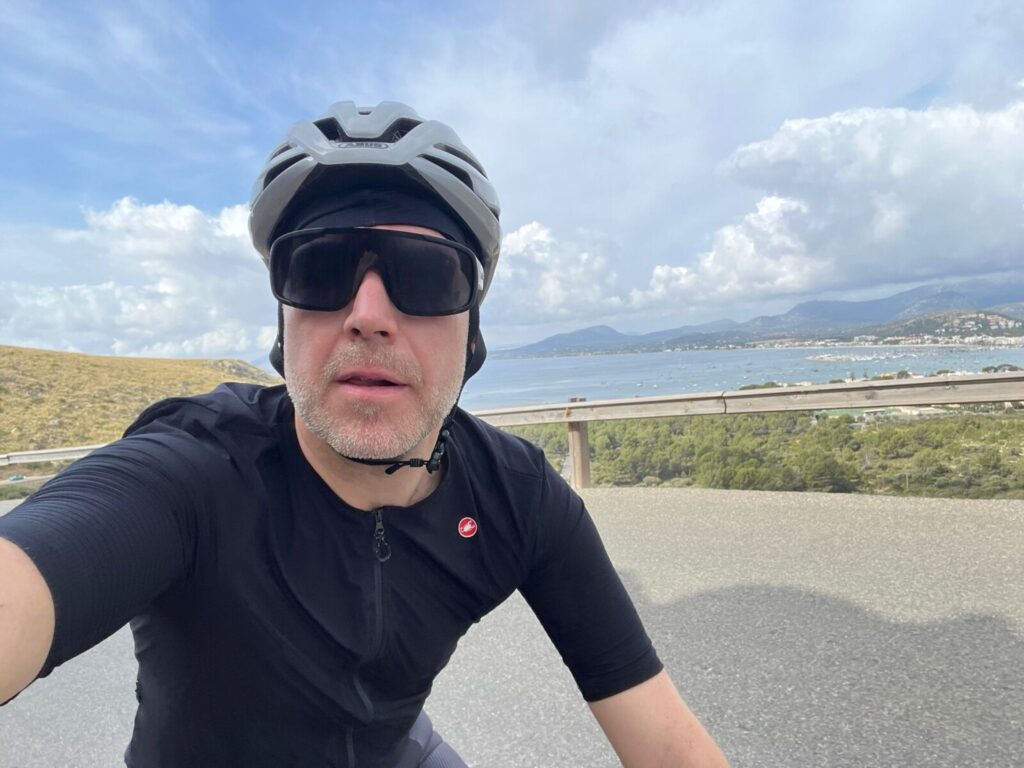In this post we discuss how to get back to cycling after sciatica via an interesting case study.

Sciatica describes a situation where the sciatic nerve is being compressed or is irritated. In around 90% of cases this is due to a spinal disc herniation.
This seemed to be the case with Chris, who came to me after suffering a frightening episode which briefly caused him to lose function in his right leg.
A keen cyclist, he told me his goal was to return to bike riding, hopefully before a planned cycling trup to Majorca. Nice.
Interestingly, despite a scan showing a herniated disc on the right side of his lumbar spine, the majority of his symptoms were now down his left side.
This speaks to the variable nature of pain.
We got to work.
Focus on muscle contraction not stretching with sciatica
I’ve discussed before the mixed results that stretching can have on sciatica symptoms.
Chris found the stretches given to him after his visit to the hospital actually made his symptoms worse. He had already stopped doing them.
We focused instead on improving the function of his muscular system, starting with his left hip and ankle where we found significant limitations.
We took extra care to avoid motions and positions that seemed to make his symptoms worse.
After a couple of sessions, Chris noticed that walking was easier and he had less discomfort.
Strengthen muscles in joint positions you can comfortably achieve
Now Chris was moving more freely, we began to focus on the muscles that are important for cycling, namely the quadriceps (thigh muscles) and the knee flexors (hamstrings etc).
Crucially we trained these muscles in ranges of motion that Chris could comfortably achieve without discomfort. .
Slowly but surely these ranges expanded as we strengthened the muscles involved.
Find a starting point with problematic movements
Cycling involves holding positions of spinal flexion for long periods of time whilst the hips are moving in and out of flexion.
Both motions were problematic for Chris.
The crucial part of addressing a movement that might cause hesitation and sometimes pain is finding a starting point.
This may involve limiting the range of motion and the amount of resistance you’re working with. Sometimes neither movement or additional weight is necessary, just focusing on muscle contraction is enough.
Gradually Chris became comfortable with both flexing and extending his spine. First with minimal resistance and then against a progressive load.
How to return to cycling after sciatica
Before you return to cycling first check whether the joint positions you have to achieve on the bike are possible.
Key is how much hip flexion you have available without provoking symptoms. This post will show you how to assess this.
Once you can comfortably achieve the cycling position, it’s time to test whether you can cycle for short periods without provoking a response.
Chris did this on an indoor trainer at first, before slowly progressing to the road.
As with resistance training, it’s important to progress your cycling in a piecemeal fashion. Increase the distance on flat rides first before adding hills.
Summary
As you may have guessed from the image at the start of this post, Chris was able to take his bike trip to Majorca.
This is testament to his hard work and dedication. It’s also an illustration of what’s possible if you work within the limits of your body and don’t force the issue.
In time both the irritated nerve and the disc will heal. Start by using resistance training to train what ranges of motion you have available, using your symptoms as a guide.